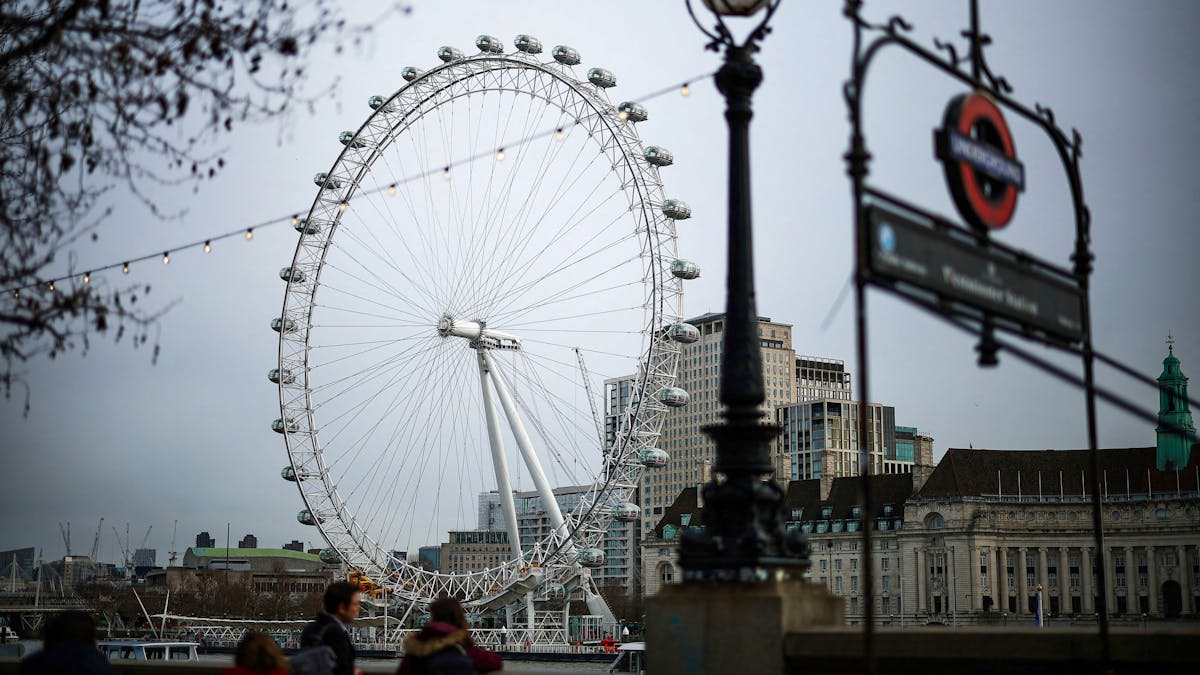“I would never have predicted that she would still be there 25 years later!” On board one of the cabins in London Eye, the London wheel of London, its architect is pleased to see this tourist attraction celebrating a quarter of a century.
The Briton Julia Barfield designed with her late husband David Marks, also an architect, this giant wheel installed on the southern bank of the Thames on March 9, 2000, and which should have been an ephemeral five -year construction to celebrate the new millennium.
135 meters high
But it was permanently established in the London landscape, of which it has become an icon: today its characteristic silhouette of 135 m high is stamped on memories, drawn by street artists, photographed on millions of selfies.
The primary objective, explains Julia Barfield at AFP, was to allow a breathtaking point of view on the city. She is delighted that 25 years later, people continue to get on board, “to celebrate London, which is fundamentally the goal of the project,” she adds.
Despite its price (42 pounds, or 48 € for a standard ticket purchased on site), the London Eye is one of the most visited paid attractions in the country. Each year, some 3.5 million tourists flock to take a half hour tour with panoramic views.
“It was impressive,” says Leonardo Manuel, a 13 -year -old Peruvian tourist who visited Europe with his family for the first time. “Coming to London was one of my dreams. We were able to see the whole city, slowly, taking the time to admire it, ”he explains.
A cabin by arrondissement
With its 32 cabins, each representing one of the districts of the city of London and capable of accommodating up to 25 people, the London Eye is a juggernaut of steel. The architects wanted to create a feeling of wonder among visitors. The idea was that they say to themselves when they saw the structure: “Wow, how did they do this?”, Explains Julia Barfield.
Yet the beginnings of the London Eye were not without a hitch. He was first rejected during a call for projects for the creation of a new monument in the city to celebrate the entry into the year 2000. Julia Barfield and David Marks did not give up, making feet and hands for years to obtain funding for this ambitious project, she says.
This unusual structure required a number of innovations both at technical and material level. Special curved glass for capsules had to be imported from Venice. The different parts were transported by river, to the Thames.
The cables had dropped
The workers had to work on the water to assemble the wheel. Finally, inspired by techniques used to install oil platforms in the North Sea, the wheel was slowly hoisted vertically … twice, because the cables dropped during the first attempt. The structure was too heavy.
Other technical problems forced the public to wait a few months before it could take a first round on the millennial wheel.
The London Eye has joined a wave of buildings built in the British capital to greet the dawn of a new era, such as the Millennium Dome, the Millennium Bridge and the Tate Modern.
When the Londoners feared the IT bug of the year 2000 and “Baby One More Time” by Britney Spears was the best -selling single of the year, the London Eye was the largest wheel in the world. It has since been overwhelmed by others, notably that of Dubai.

